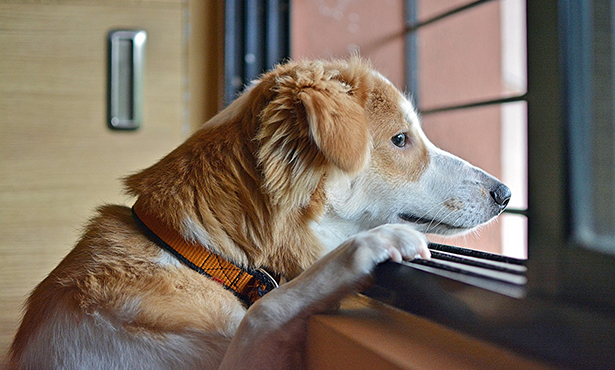Understanding Separation Anxiety in Dogs
Separation anxiety in dogs is a complex psychological condition that can deeply affect their well-being and your household harmony. Defined as a state of heightened distress or agitation triggered by separation from their owners, separation anxiety can manifest in a variety of distressing behaviors. Dogs afflicted with this condition may exhibit destructive tendencies, incessant barking, or even attempts to escape confinement when left alone. This emotional turmoil stems from a deep-seated fear of being abandoned or isolated, making it imperative for pet owners to grasp the gravity of this issue.
Recognizing Signs of Separation Anxiety in Your Dog
Identifying the telltale signs of separation anxiety in your furry companion is paramount to addressing the issue effectively. Behavioral cues, such as excessive clinginess, shadowing your every move, or destructive acts like chewing furniture or scratching doors, can be indicative of an underlying anxiety disorder. Additionally, physical manifestations like drooling, panting, or trembling when left alone serve as tangible evidence of your dog’s inner turmoil. Furthermore, paying attention to environmental triggers, such as specific departure cues or changes in routine, can provide valuable insight into the root cause of your dog’s distress.
Strategies for Managing Separation Anxiety
Thankfully, there are several proactive measures you can take to alleviate your dog’s separation anxiety and restore peace to your household. Gradual desensitization, a technique involving slowly acclimating your dog to periods of solitude while reinforcing positive behaviors, can help diminish their anxiety over time. Establishing a consistent daily routine provides structure and predictability, which can offer comfort and security to an anxious dog. Moreover, engaging your pet’s mind with mental stimulation, such as interactive toys or puzzle feeders, can divert their attention away from feelings of abandonment.
Seeking Professional Help
In cases where self-help strategies prove insufficient, seeking professional guidance becomes imperative. Your veterinarian can conduct a thorough examination to rule out any underlying medical conditions contributing to your dog’s anxiety and may prescribe medication or recommend specialized behavior modification techniques. Additionally, enlisting the expertise of a certified dog trainer or behaviorist can provide invaluable support in crafting a tailored treatment plan to address your dog’s specific needs.
Creating a Comforting Environment
Crafting a soothing environment for your dog can significantly alleviate their separation anxiety and promote feelings of security in your absence. Designating a safe space within your home, equipped with cozy bedding and familiar scents, provides your dog with a sanctuary where they can seek refuge when feeling anxious. Playing calming music or white noise can drown out external stimuli and create a tranquil ambiance conducive to relaxation. Furthermore, providing interactive toys or food puzzles can offer mental stimulation and entertainment, keeping your dog engaged and content while you’re away.
Exercise and Physical Activity
Regular exercise plays a pivotal role in managing separation anxiety by promoting physical and mental well-being in dogs. Daily walks, play sessions, or interactive games not only help expel excess energy but also stimulate the release of feel-good hormones that can alleviate stress and anxiety. By incorporating physical activity into your dog’s daily routine, you can foster a sense of balance and fulfillment that mitigates the negative effects of separation anxiety.
Avoiding Reinforcement of Anxiety
Avoiding actions that reinforce anxiety is essential in addressing separation anxiety effectively. Resist the urge to lavish your dog with excessive attention or affection before departing, as this can exacerbate their distress and reinforce anxious behaviors. Similarly, ignoring attention-seeking behaviors like whining or pawing for attention before leaving can prevent inadvertently reinforcing your dog’s anxiety. Instead, practice gradual departures and returns to desensitize your dog to your comings and goings, promoting a sense of security and stability.
Patience and Consistency
Above all, managing separation anxiety requires patience, consistency, and unwavering commitment. Recognize that progress may be gradual and celebrate even the smallest victories along the way. By maintaining a positive attitude and adhering to your chosen training approach with steadfast consistency, you can empower your dog to overcome their separation anxiety and thrive in your absence.
Final Words
Undertaking the adventure of being a dog owner is like having your arms opened and your heart filled with love—come times of joy and sorrow—and that’s what you’ll be given if you choose to do so: a lifetime of happiness, solidarity, and beautiful memories.




